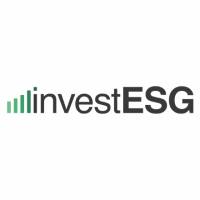Sustainability in EM Bond Strategies – Interpretation of data is crucial | GAM
no-teaser

© GAM
By Stephanie Maier, Global Head of Sustainable and Impact Investment at GAM InvestmentsIntegrating environmental, social and governance (ESG) factors into sovereign strategies requires a deeper look at both the ESG metrics and what they can tell us. This is particularly the case in emerging markets (EM).Sovereign ESG ratings are increasingly used in investment decisions, but as with corporate ESG ratings, it is important to understand what they are measuring. Typically, ESG issues are aggregated from recognised NGO country rankings, such as Transparency International’s Corruption Perception Index, or ratings, such as the Freedom House score for civil and political freedoms, World Bank Governance Indicators or World Bank compiled data on various subjects.Breaking down the E, S and GHowever, the aggregate score masks deeper insights. For example, our research indicates governance ratings – capturing issues such as level of bribery and corruption, ease of doing business, quality of institutions and political stability – have the highest correlation to credit spreads. These are followed by social and environmental variables. This also implies that certain ESG risks are priced in, but may also be both over or under-priced. But these issues are often inter-related. Physical climate risks, as an example, may materialise as water shortages. Without adequate infrastructure to manage this shortage, social unrest may result, particularly in countries where governments and institutions are weaker and there are fewer resources to manage these risks. This trend is more pronounced in EM versus developed markets.Data challenges require a more integrated approachWe believe governance issues in particular are key. But at the same time we recognise much of the data commonly used in ESG ratings is infrequently updated and often significantly lagging. We have seen this in particular for statistics that are submitted by countries themselves where there is little data collection infrastructure.That is why we use our proprietary Crisis Cycle Filter, which is designed to identify country-specific factors. These include quantitative factors such as foreign exchange reserves or current account deficits, in addition to qualitative factors such as an assessment of the vulnerability of the banking sector – considered to be the most reliable, early indicators of financial crises. These are frequently precipitated by poor governance. We therefore use this tool alongside daily monitoring of relevant political, economic and ESG events and trends to make active investment decisions.How do ESG scores affect allocation of capital?Certain components of ESG scores are correlated with credit spreads. However, we also see a positive correlation between ESG scores and GDP per capita. This means that allocating towards countries with higher ESG scores implies an allocation towards higher income countries. This could result in a tilt towards lower yielding countries, and also a tilt away from those countries that are arguably most in need of capital.We therefore believe it is important to recognise where ESG scores and factors are being used to better price risk and where they can be used, for example, to allocate toward countries that are improving on key ESG factors. The data points may be the same, but how they are used and the impact this has on capital allocation and ultimately cost of capital is distinct. Balancing risk, returns and impact, as a result of allocation decisions, needs to be carefully considered.Importance of social and environmental factors will increaseGoing forward we expect there will be a heightened focus on the use of ESG metrics both to better understand ESG risks but increasingly to allocate to those countries that may be improving their ESG performance. We are likely to see a continued focus on governance. But there is also an increasing awareness of the importance of social factors, often well correlated with governance factors, and environmental factors. Where environmental factors have historically had the weakest correlation with credit spreads, climate risk – both vulnerability to physical risks and transition risks associated with a high dependence on fossil fuel exports – is likely to become increasingly material. All opinions expressed are those of the author. investESG.eu is an independent and neutral platform dedicated to generating debate around ESG investing topics.

